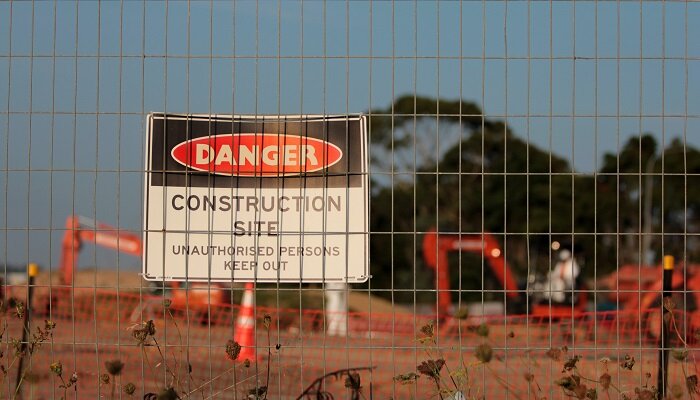Understanding The Economic Cost of Construction Site Injuries
Construction sites are inherently hazardous environments, presenting numerous risks to the safety and wellness of employees. Despite multiple safety measures, accidents can still occur, resulting in injuries that have significant economic consequences. Not only do construction site injuries cause direct losses to employers and workers, but they also lead to indirect expenses that affect the […] The post Understanding The Economic Cost of Construction Site Injuries appeared first on World Construction Today.

Construction sites are inherently hazardous environments, presenting numerous risks to the safety and wellness of employees. Despite multiple safety measures, accidents can still occur, resulting in injuries that have significant economic consequences.
Not only do construction site injuries cause direct losses to employers and workers, but they also lead to indirect expenses that affect the entire industry and the economy. To help create awareness, this article discusses the economic cost of construction site injuries.
Medical Expenses
The most apparent economic cost of construction site injuries is the burden of medical expenses. These costs encompass immediate medical care, hospitalization, surgeries, medications, and rehabilitation.
Additionally, injuries that require prolonged treatment and ongoing medical support can place significant financial strain on injured workers and their families. Construction companies may also bear some of these costs, especially if the injuries are linked to workplace safety violations.
Workers’ Compensation Claims
Construction site injuries often result in workers’ compensation claims, which entail financial compensation to cover medical expenses, lost wages, and rehabilitation costs. A higher number of claims can significantly impact a company’s bottom line, particularly when injuries are severe or involve prolonged recovery periods.
Frequent claims may also lead to increased insurance costs for the construction firm, as insurance providers adjust premiums based on the company’s risk profile. Consequently, minimizing workplace injuries is not only a matter of employee welfare but also crucial for maintaining a stable and financially sustainable business.
Lost Productivity
When a construction worker is injured, the damage extends to the workflow and productivity of the entire construction site. Work delays can occur as injured employees undergo medical treatment and recovery, leading to project setbacks and increased labor costs.
Additionally, construction companies may need to hire temporary employees to compensate for the loss of workforce, further adding to operational expenses. Lost productivity can have a domino effect on project timelines, causing financial losses and potential contractual penalties.
Litigation and Legal Costs
Serious construction site injuries may lead to legal action. This happens when injured workers file lawsuits against construction companies or third parties involved in the project. Legal costs associated with defending these lawsuits, settlements, or court-awarded compensations can be excessive.
Even if the construction company is not found liable, the legal battle alone can drain financial resources and adversely impact the company’s reputation. Construction companies should invest in robust safety protocols and ensure compliance with industry standards, minimizing the likelihood of legal disputes and safeguarding financial stability.
Training and Recruitment
High rates of construction site injuries can lead to higher employee turnover as workers may seek safer job opportunities elsewhere. This constant turnover necessitates continuous recruitment and training of new workers, incurring recruitment costs and delaying project timelines.
Moreover, skilled workers with specialized training are precious, and their loss due to injuries can create skill shortages, further affecting productivity. On the other hand, retaining experienced and well-trained workers enhances safety awareness and ensures efficiency and cost-effectiveness on construction projects.
Increased Insurance Premiums
Construction companies must have comprehensive insurance coverage to protect employees against accidents and injuries. However, a history of frequent and severe construction site injuries can lead to increased insurance premiums for the company.
Typically, insurance providers use past claim data to assess risk, and a poor safety track record can indicate higher risk, resulting in elevated premium rates. As insurance costs rise, it directly impacts the company’s operational expenses, reducing profit margins and hindering growth.
Reputation and Public Relations
Construction companies with a history of frequent accidents and injuries may face damage to their reputation and public relations. Unfortunately, negative publicity can erode the trust of clients, investors, and stakeholders, leading to decreased project opportunities and potential loss of contracts.
A tarnished reputation can also hinder recruitment efforts, making it challenging to attract skilled workers and professionals. Conversely, construction companies with an exemplary safety record enjoy positive publicity, enhanced brand image, and a competitive edge in the industry.
Ensuring Workplace
To mitigate the economic costs of construction site injuries, construction companies must prioritize workplace safety. Implementing comprehensive safety programs and fostering a culture of awareness are essential steps in preventing accidents and injuries.
Generally, companies should conduct regular training sessions emphasizing safe work practices, hazard identification, and emergency response protocols. Moreover, specialized training, including forklift safety measures, should be provided to workers operating heavy machinery and equipment.
It is also crucial to have an open communication channel where workers can report safety concerns without fear of reprisal. Lastly, companies should consider setting up initiatives to reward safety-conscious behavior and recognize individuals who champion safety initiatives to reinforce the importance of workplace safety.
Conclusion
The economic cost of construction site injuries is not limited to immediate medical expenses and compensation. The indirect expenses and socioeconomic impacts can have far-reaching consequences on companies, workers, communities, and economies.
Therefore, implementing robust safety protocols, providing regular training, and fostering a safety-conscious culture is crucial for reducing these expenses and ensuring the well-being of all stakeholders involved in the construction industry.
The post Understanding The Economic Cost of Construction Site Injuries appeared first on World Construction Today.

 machineryasia
machineryasia 






